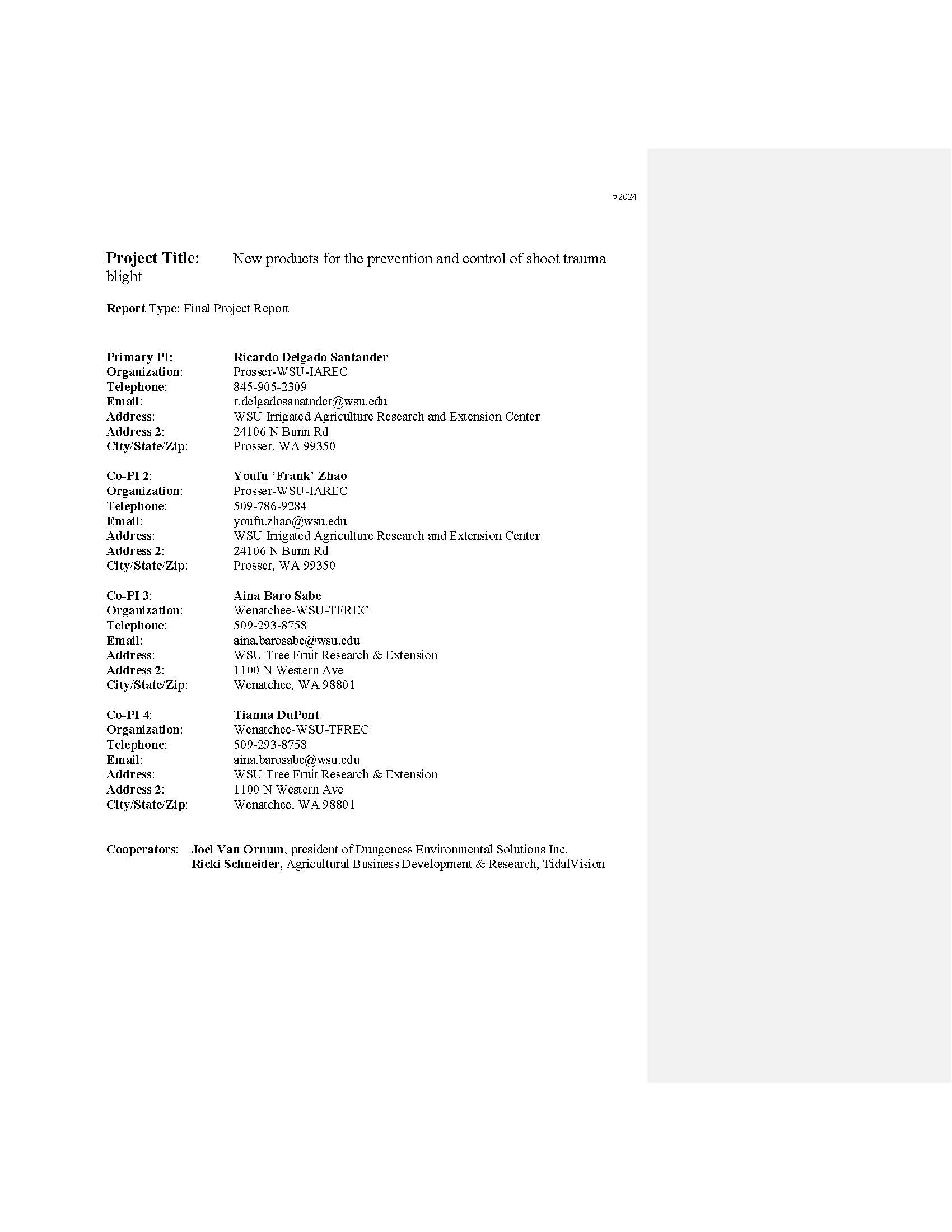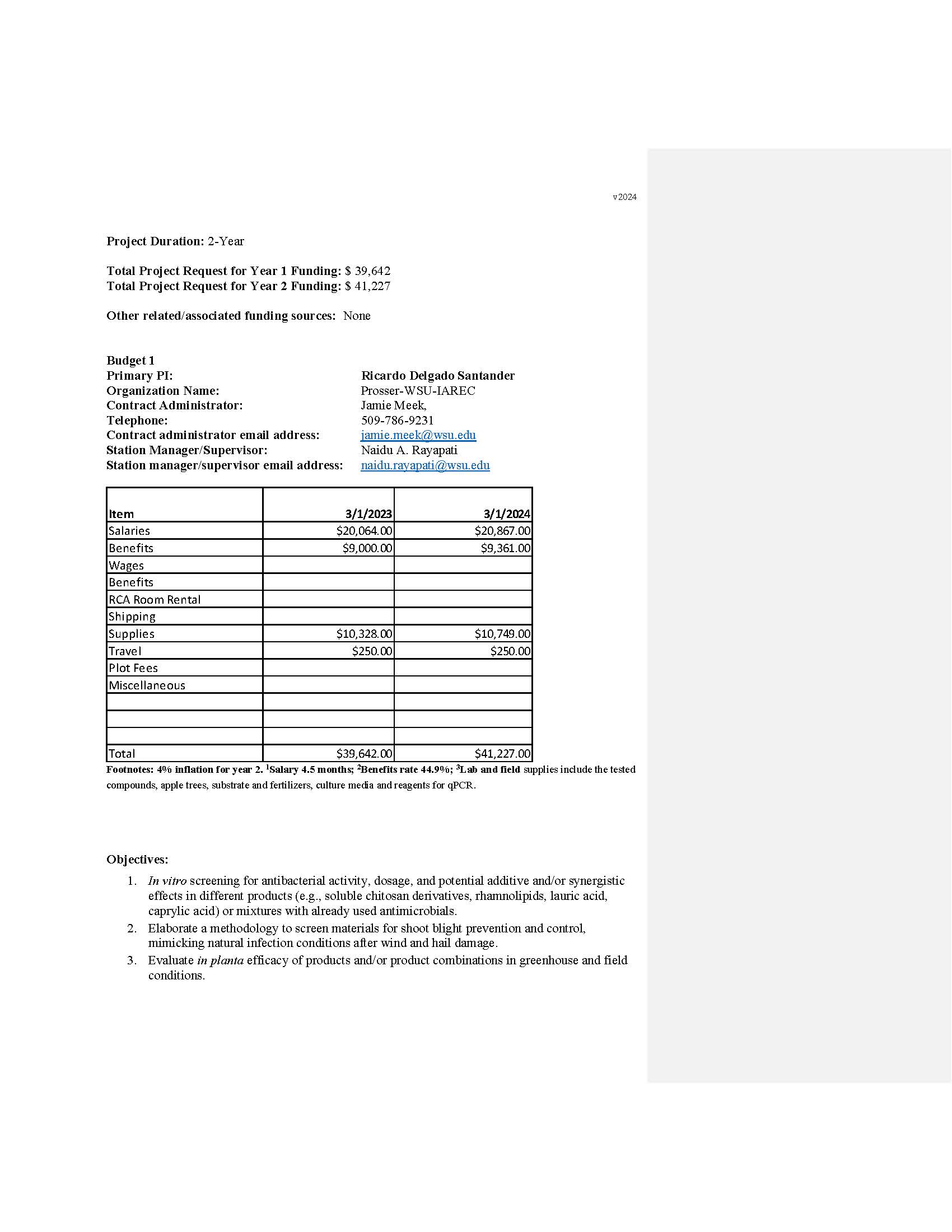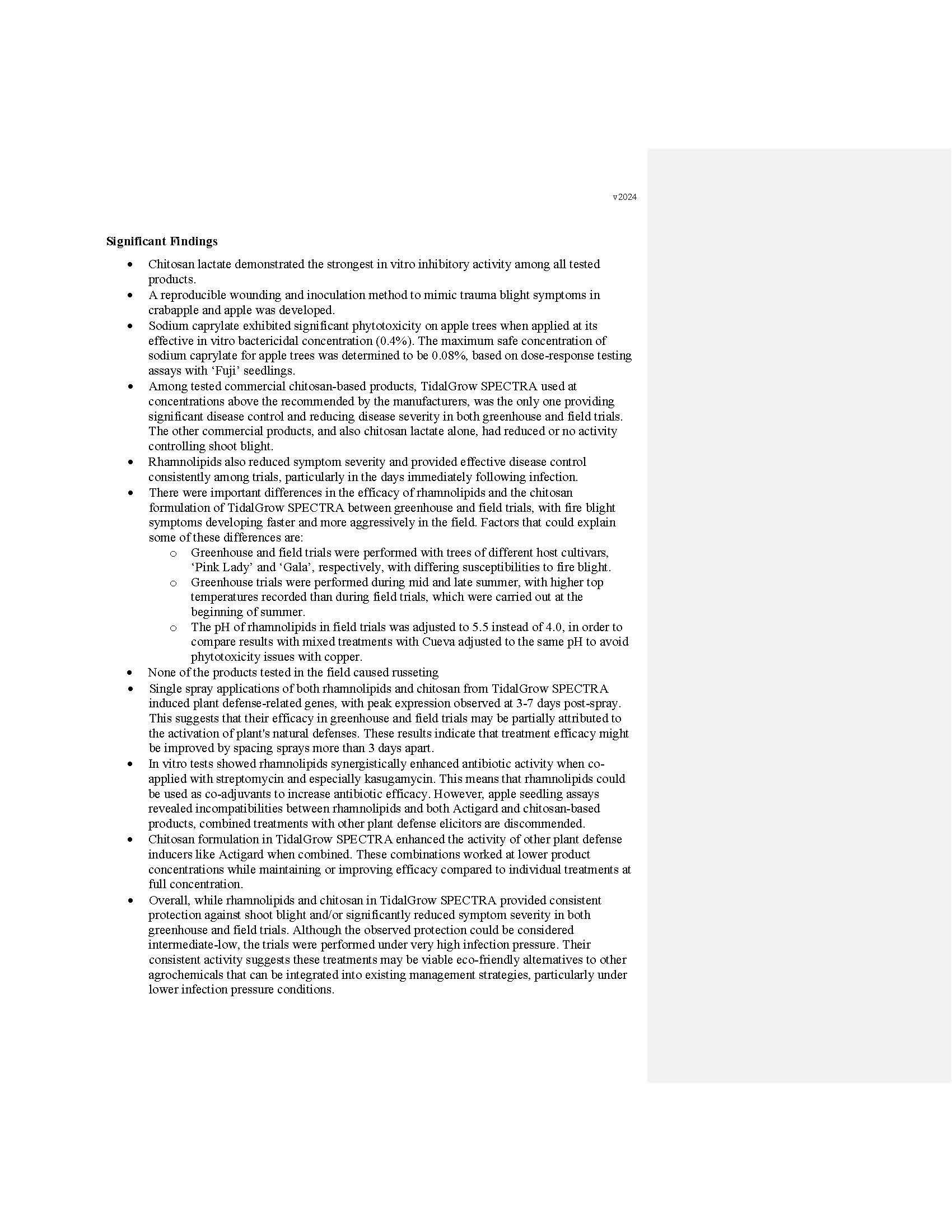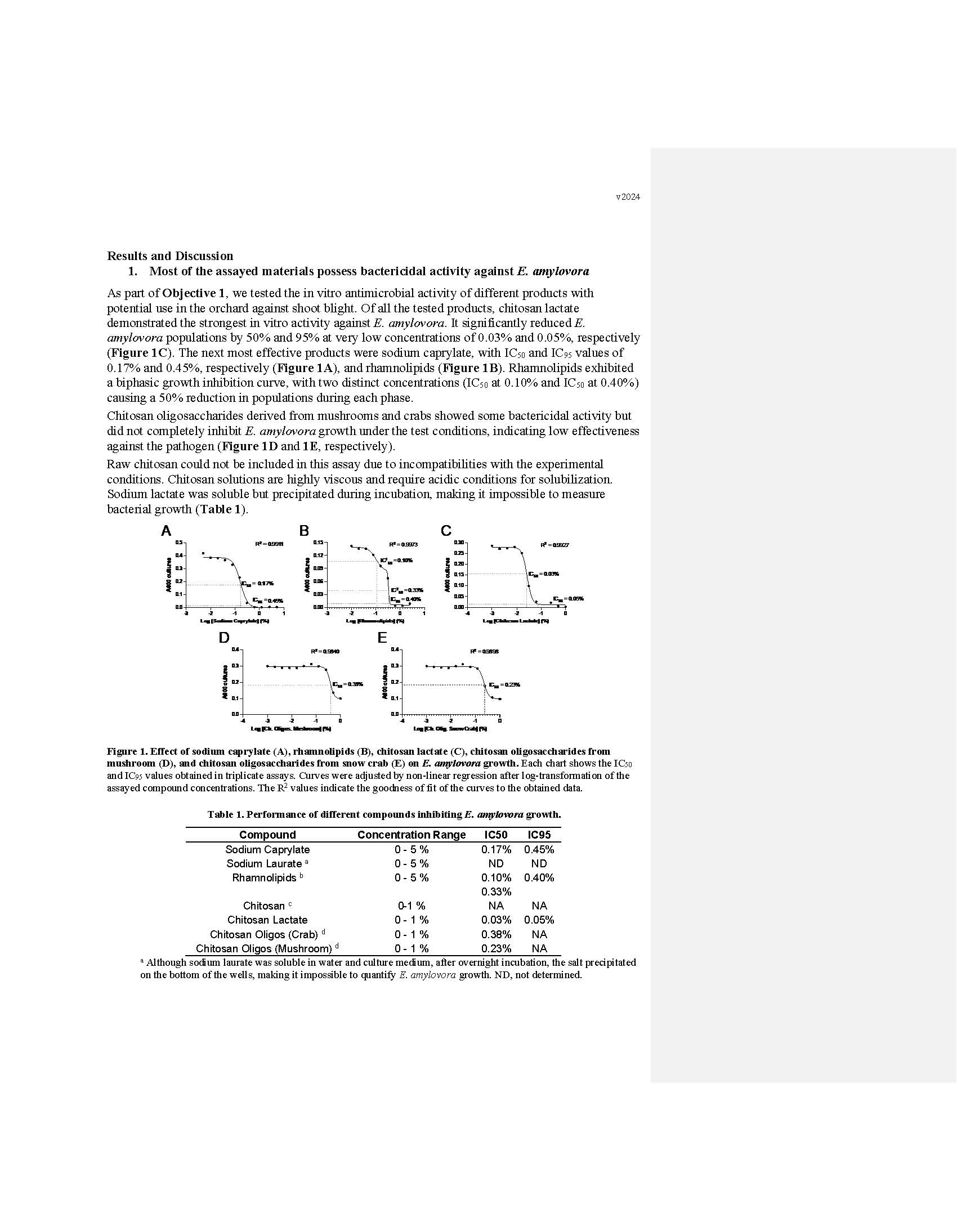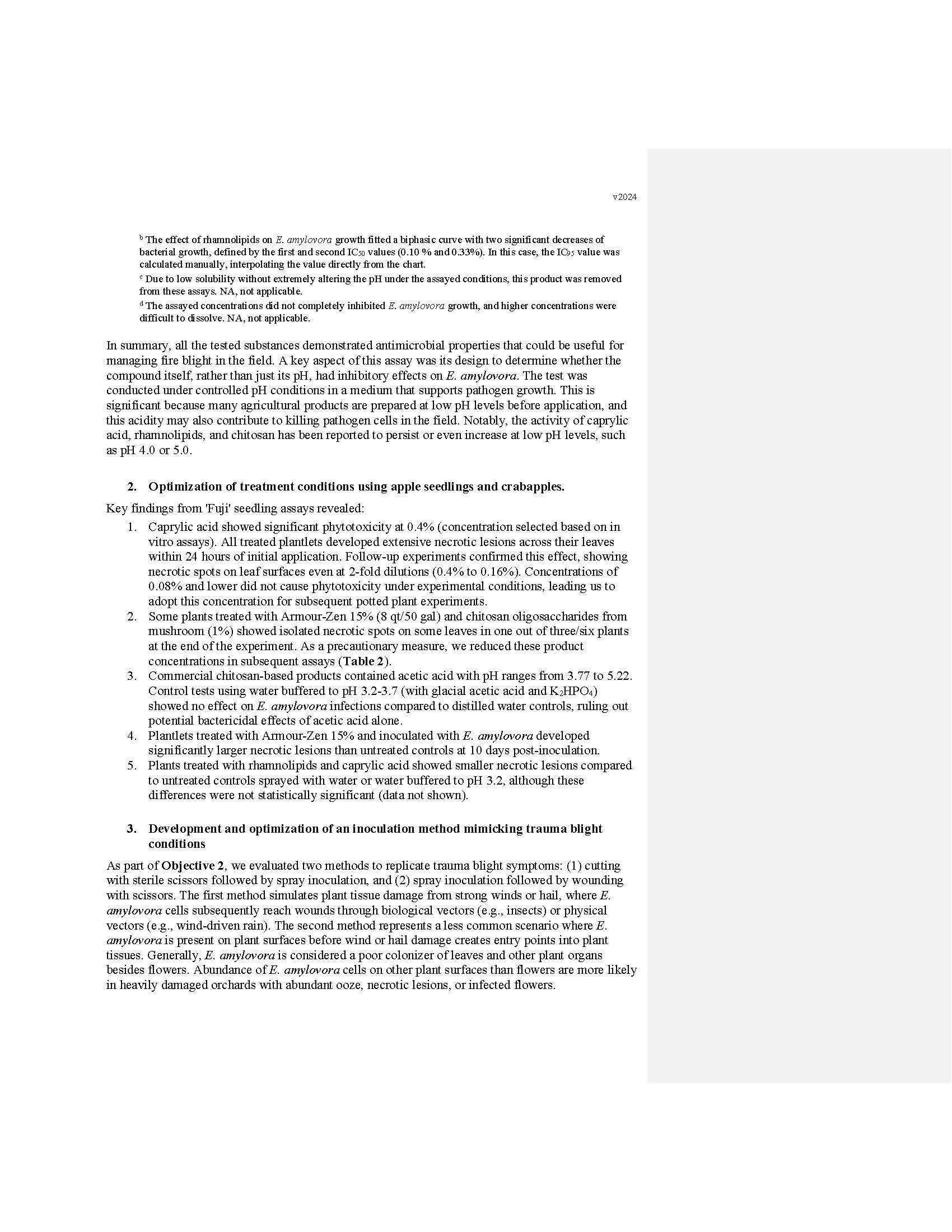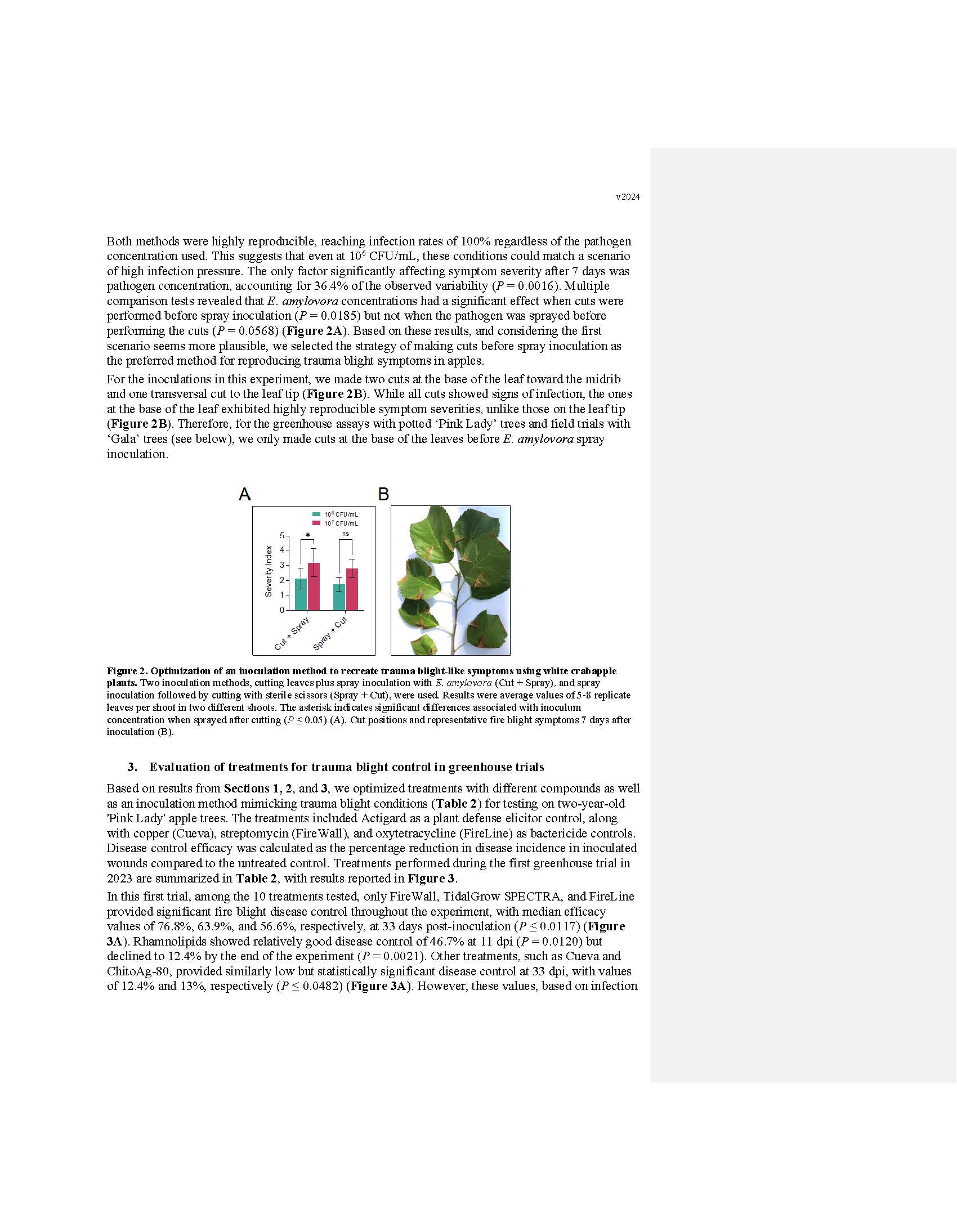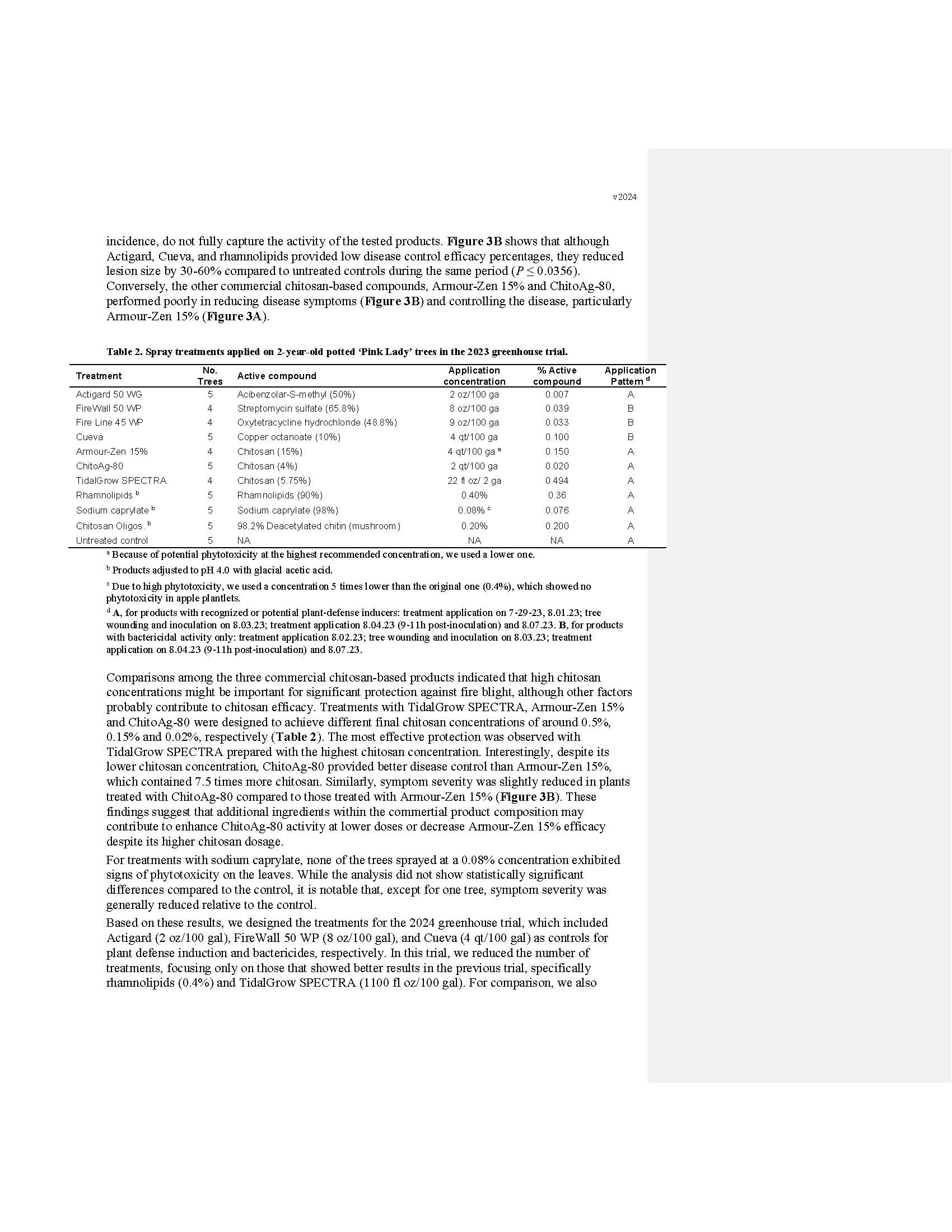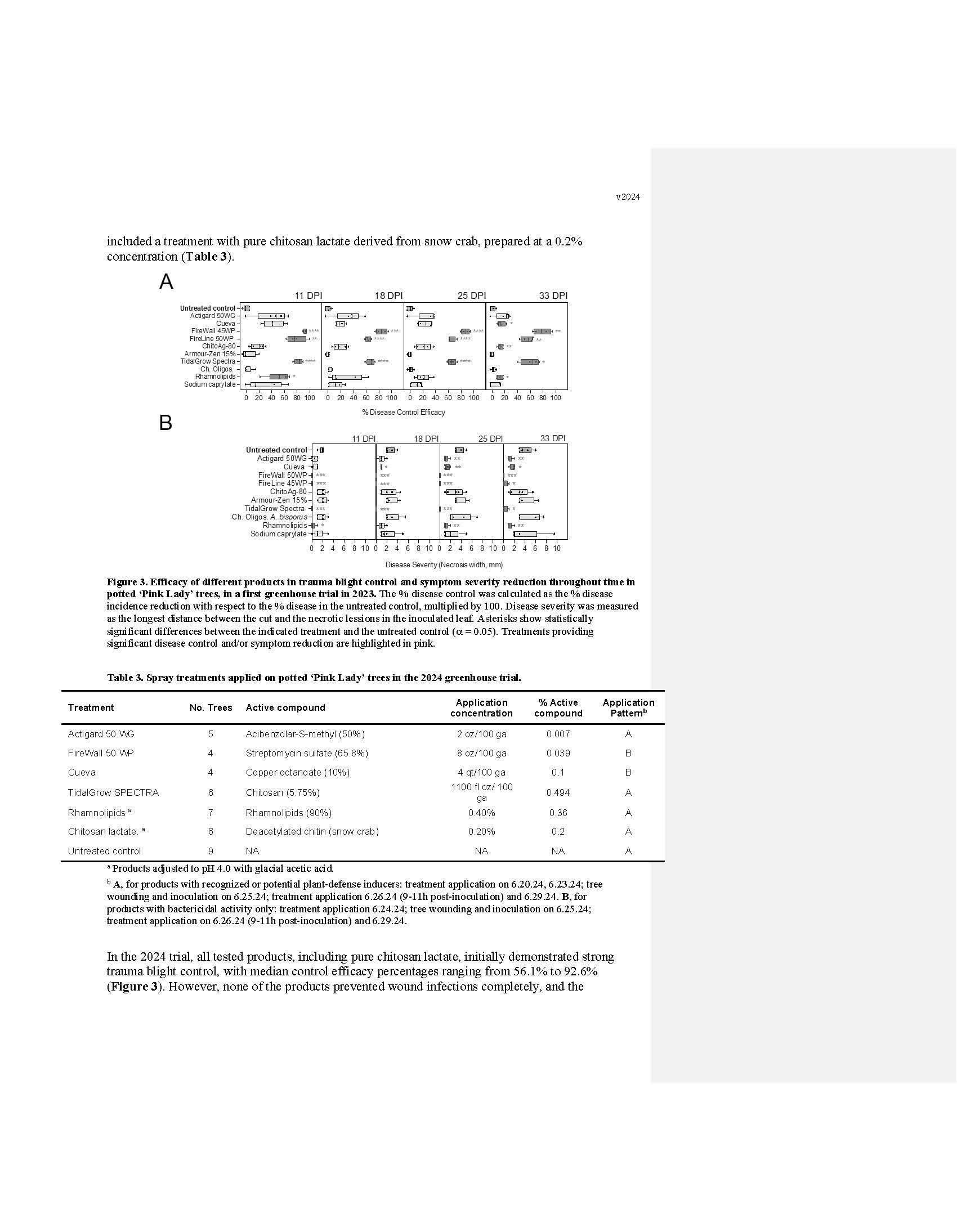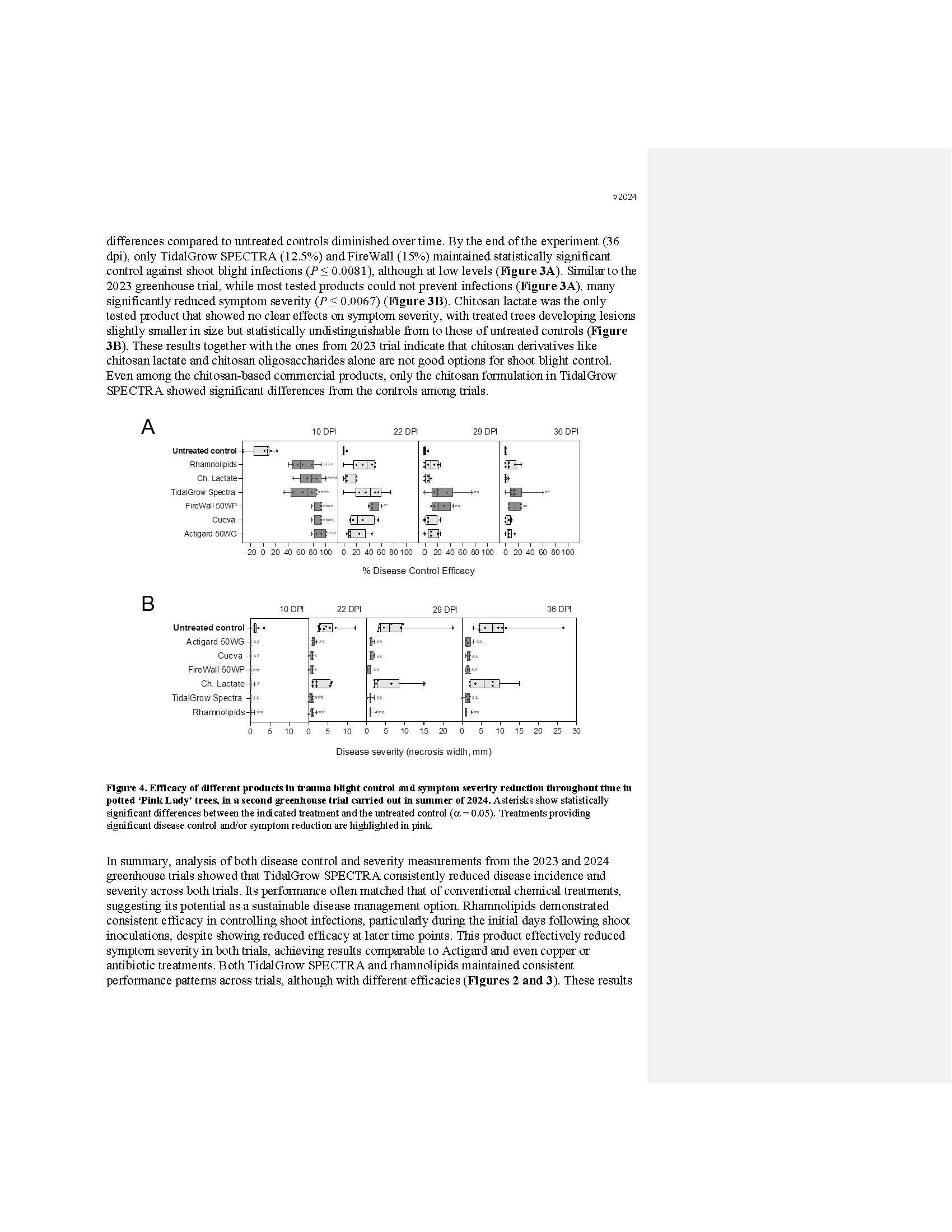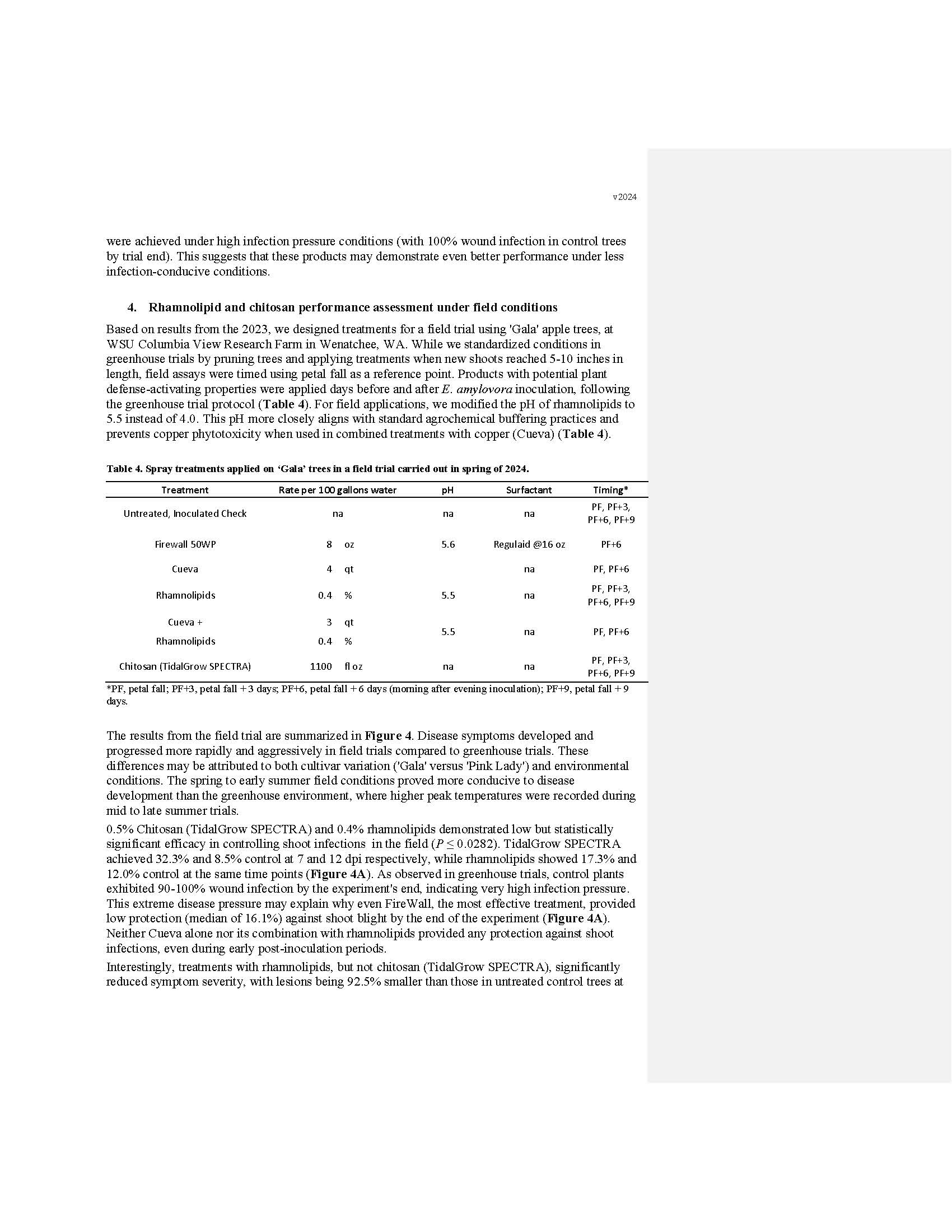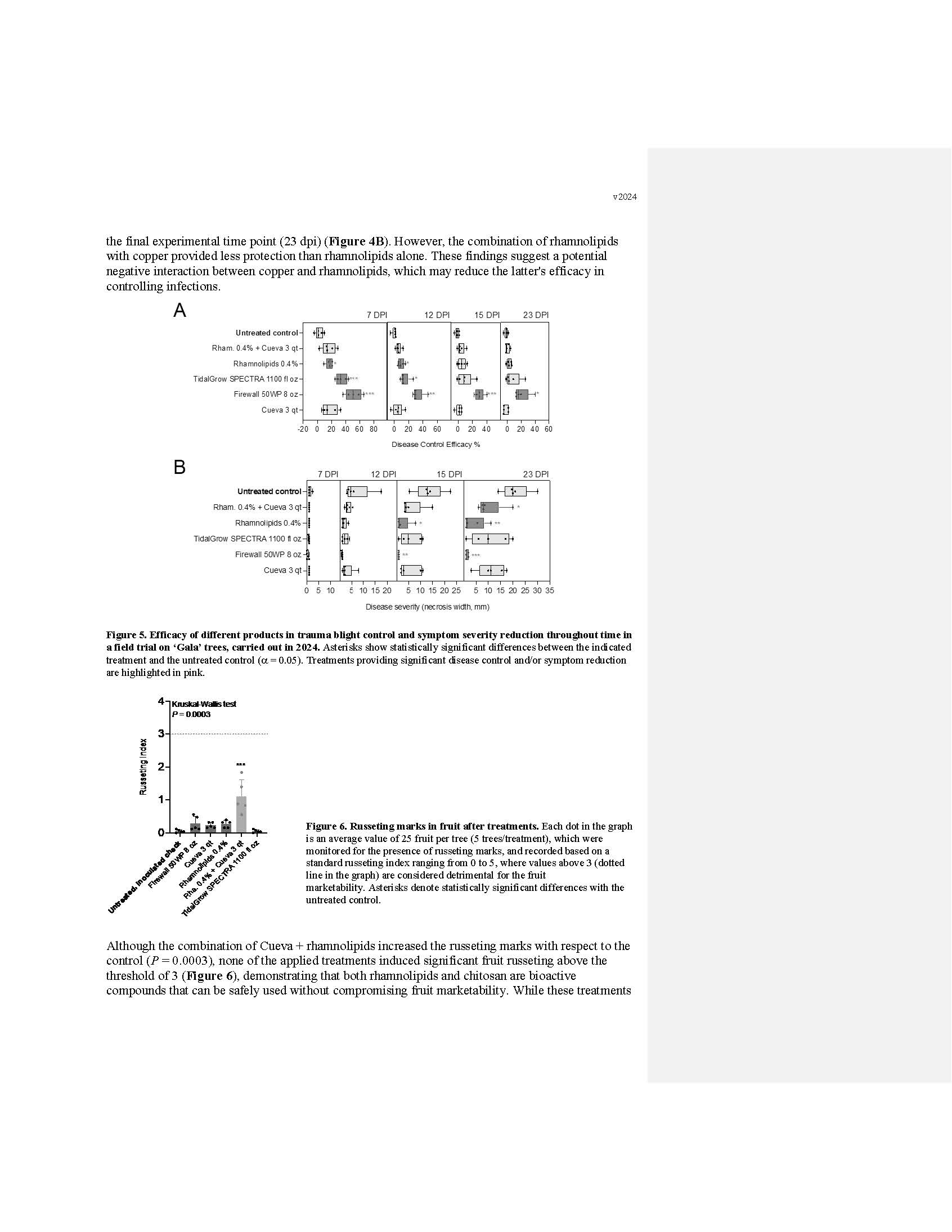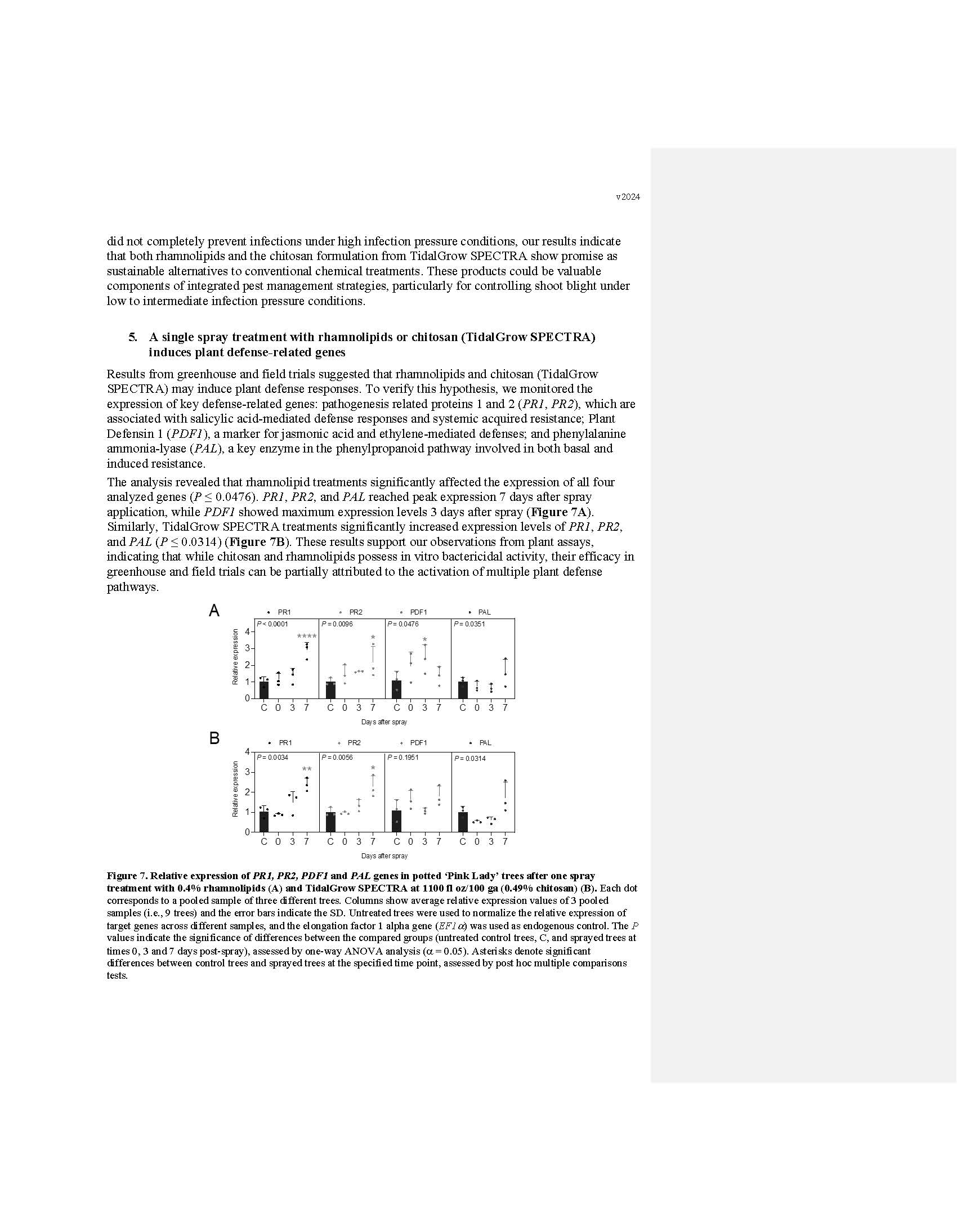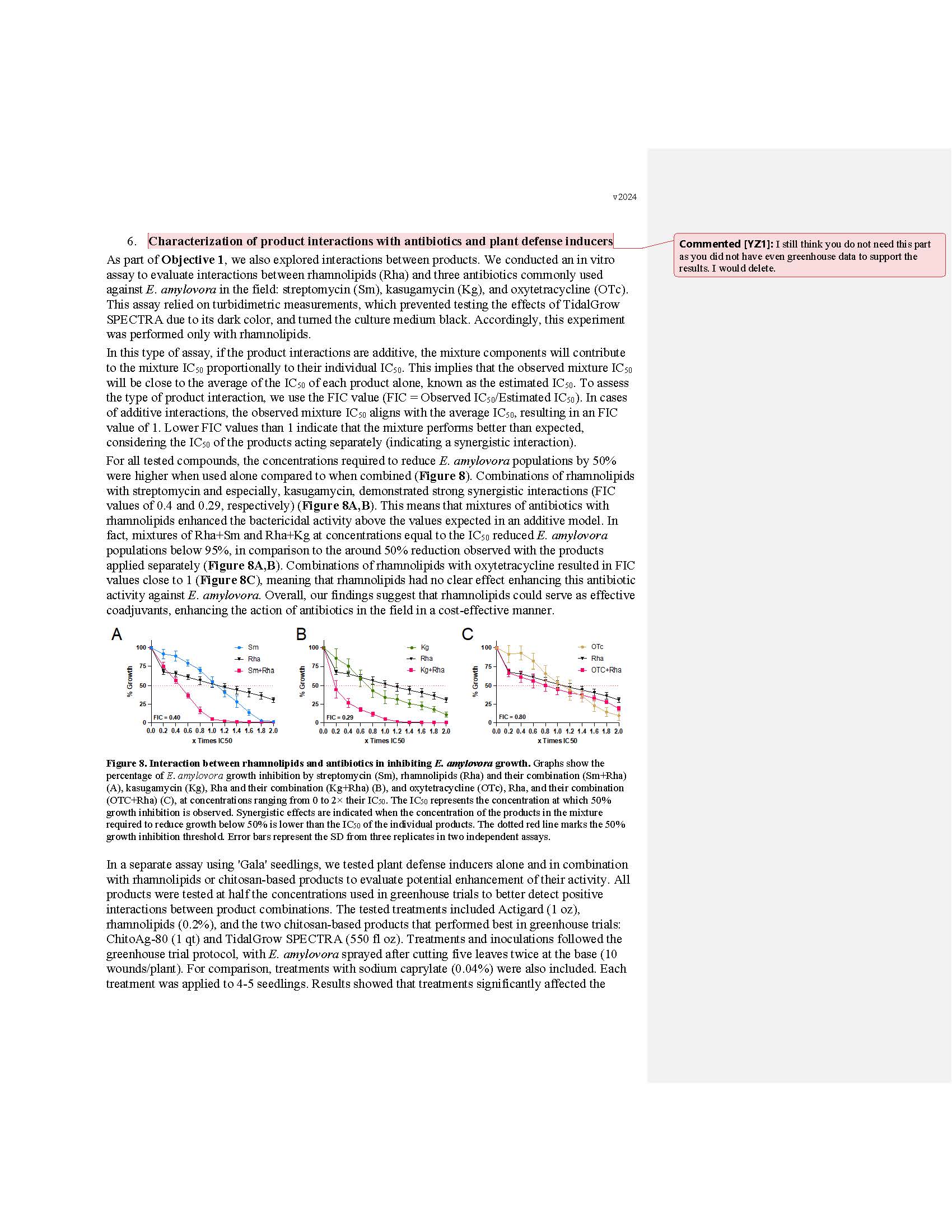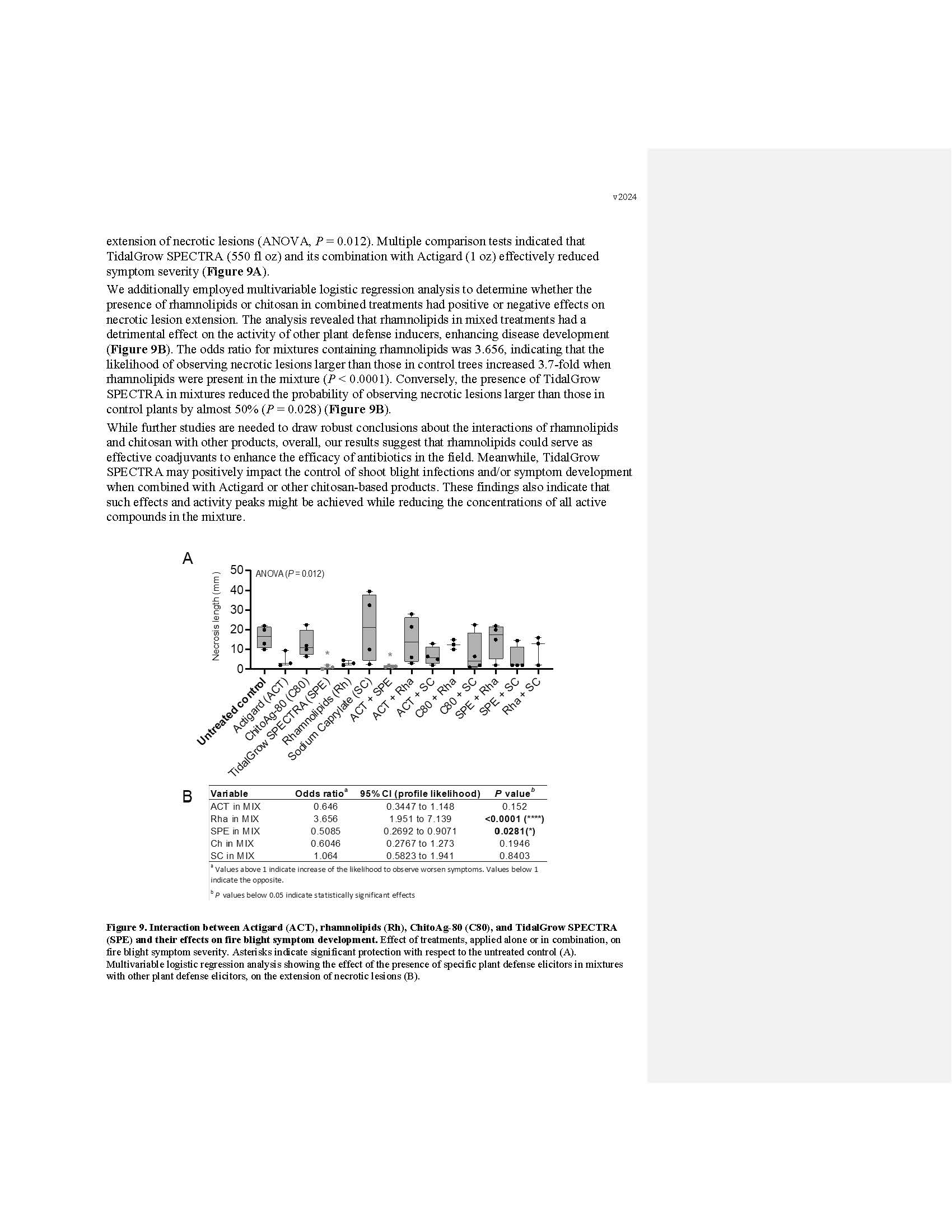New products for the prevention and control of shoot trauma
Author: Ricardo Delgado Santander
Published: 2025
Summary: Extensive work on the prevention of blossom infection in Washington has been critical to reduce the impact of fire blight, which can cause severe infections in warm wet springs. However, few tools are available to prevent shoot blight infections, especially after hail and wind damage (trauma blight). This study investigated the potential of sustainable products, including chitosan-based formulations and rhamnolipids, for managing shoot blight. Initial in vitro screening revealed that all tested products had bactericidal activity against Erwinia amylovora, suggesting their potential to reduce pathogen populations on plant surfaces. Among these, two treatments showed promise: the chitosan formulation in TidalGrow SPECTRA, applied at 1100 fl oz/100 ga, and rhamnolipids applied at 0.4%. These products consistently affected disease development across two greenhouse trials and one field trial. While the level of shoot blight control varied from moderate to low depending on the trial, it is important to note that these results were obtained under extremely high infection pressure conditions. Under these challenging conditions, treatments with chitosan from TidalGrow SPECTRA and rhamnolipids provided protection levels and/or disease severity reduction comparable to conventional treatments such as copper (Cueva), Actigard, and antibiotics (FireWall and FireLine). This suggests these products might serve as potential alternatives to less environmentally friendly agrochemicals commonly used in fire blight management. Molecular analyses indicated that both chitosan from TidalGrow SPECTRA and rhamnolipids activated plant defense-related genes, including those associated with salicylic acid and jasmonic acid pathways. This suggests a dual mode of action: direct antimicrobial activity and stimulation of the plant's natural defenses. Additional in vitro studies revealed that rhamnolipids strongly enhanced the activity of streptomycin and kasugamycin, although they showed negative interactions with certain plant defense inducers, including Actigard. Chitosan in TidalGrow SPECTRA enhanced the activity of other chitosan-based products and Actigard when mixed together. Further research is required to refine application protocols, optimize product combinations, and evaluate long-term impacts on tree health and fruit quality. While the studied products show promise for reducing reliance on conventional chemicals, more extensive field trials are necessary before making definitive recommendations for commercial use.
Keywords:

